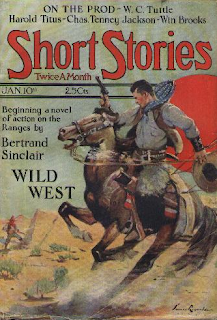

Now in the final month of the year, tradition dictates that I offer holiday gift suggestions – this time accompanied by bits and pieces published one hundred years ago today in the Globe.
Of the twenty-eight neglected books reviewed here this year, the three most deserving of a return to print are:
Hot Freeze by Martin Brett (né Douglas Sanderson)The Pyx by John BuellFour Days by John Buell
By coincidence, not design, each deals with the Montreal criminal underworld of decades past. Used copies of are available through online booksellers for as little as a dollar ($5 in the case of Hot Freeze).
 Praise this year goes to the British Columbia publishers that returned worthy titles to print through the Vancouver 125 Legacy Books Project. Ten books in total, I recommend Class Warfare by D.M. Fraser, Crossings by Betty Lambert, The Inverted Pyramid by Bertrand W. Sinclair and, above all others, Edward Starkins' Who Killed Janet Smith?
Praise this year goes to the British Columbia publishers that returned worthy titles to print through the Vancouver 125 Legacy Books Project. Ten books in total, I recommend Class Warfare by D.M. Fraser, Crossings by Betty Lambert, The Inverted Pyramid by Bertrand W. Sinclair and, above all others, Edward Starkins' Who Killed Janet Smith?
Macmillan of Canada, 1984/Anvil Press, 2011
I'll be so bold so to make this final gift suggestion: my own A Gentleman of Pleasure: One Life of John Glassco, Poet, Memoirist, Translator and Pornographer, published this past April by McGill-Queen's University Press. Seven years in the making, at long last a biography of this country's most unusual writer.
Right now, the least expensive copies – C$25.17 – come through Amazon.ca. Would that I could compete. The best I can do is offer signed copies, gift wrapped in Anaglypta (heavy embossed paper) and postage paid to any destination, at the retail price of C$39.95. Kind souls can make contact through email at my blogger profile.
Once a bookseller, always a bookseller.
































